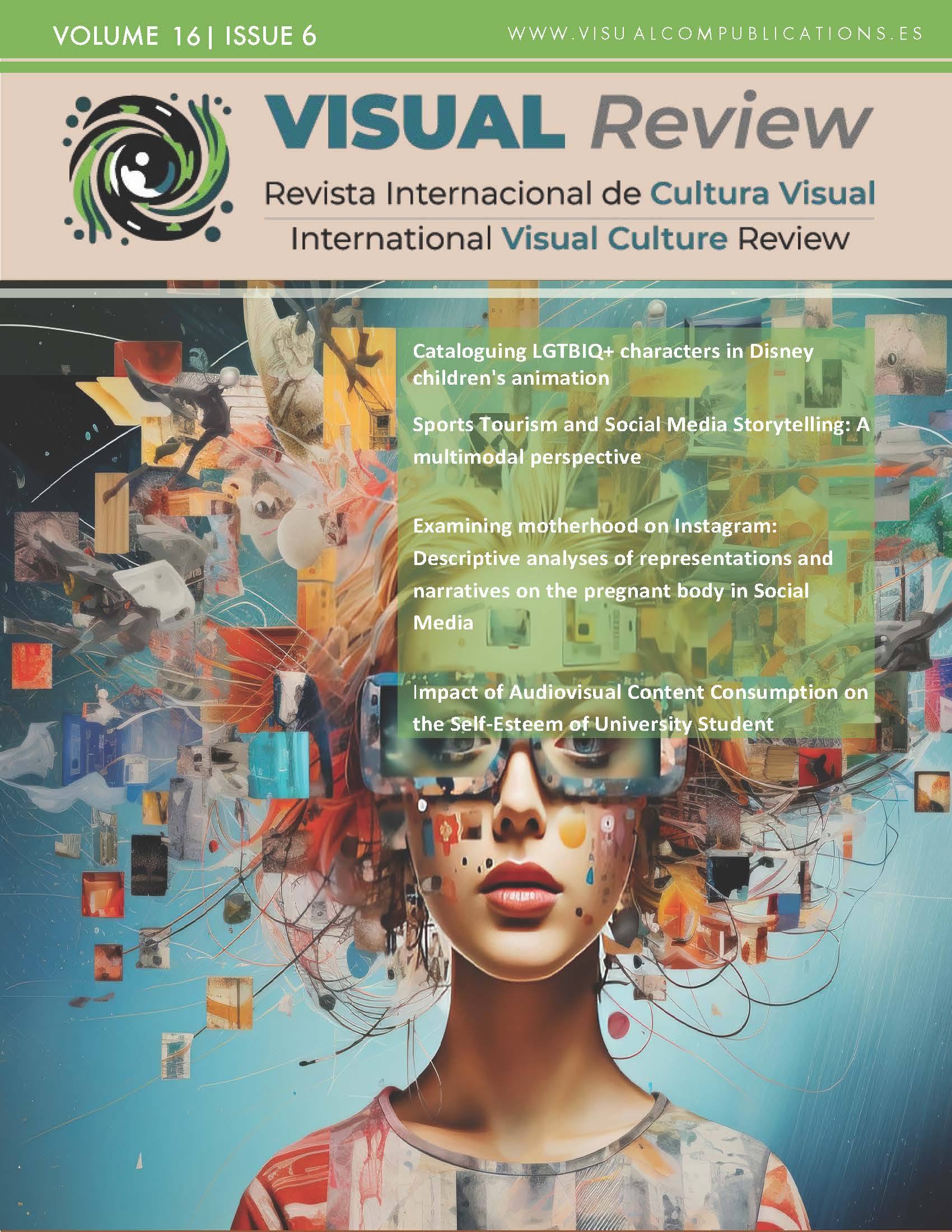Typologies and patterns of information architecture
Present in the user interfaces of social networks of Meta (Instagram and Facebook)
DOI:
https://doi.org/10.62161/revvisual.v16.5368Keywords:
Information Architecture, Social media, Patterns, Desing, Mind mapping, User experienceAbstract
Information Architecture (IA) organises digital content, from web interfaces to ATM screens and car dashboards. In addition to structure, it encompasses the labelling and organisation of information in each interface. It is presented through mind maps and is essential in both academic and professional environments. In complex products such as social networks, several IA patterns are employed simultaneously. This research introduces IA to Applied Communication Sciences, highlighting its importance for improving User Experience in social networks. This study identifies standard patterns and new types of mental maps for digital creation.
Downloads
Global Statistics ℹ️
|
523
Views
|
155
Downloads
|
|
678
Total
|
|
References
Allen, E. (2018). Mastering Card Sorting: How to Use Research to Organize Information Intuitively. O’Reilly Media, Inc. https://tinyurl.com/mryj2jnm
Apple, Inc. (s. f.-a). Apple human interface guidelines: Content. Apple Developer Documentation. https://tinyurl.com/2pwfpwyf
Apple, Inc. (s. f.-b). Carousel: Arranges images in a row. Apple Developer Documentation. https://tinyurl.com/4dbhxh8y
Apple, Inc. (s. f.-c). Context menus. Apple Developer Documentation. https://tinyurl.com/vrymzbka
Apple, Inc. (Director). (s. f.-d). Explore navigation design for iOS - WWDC22: Sarah McClanahan. https://tinyurl.com/3xkdjaju
Apple, Inc. (s. f.-e). Navigation bars. Apple Developer Documentation. https://tinyurl.com/48e527we
Apple, Inc. (s. f.-f). Ornaments. Apple Developer Documentation. https://tinyurl.com/4y86pp4x
Apple, Inc. (s. f.-g). Tab bars. Apple Developer Documentation. https://tinyurl.com/3x5fptc2
Baxter, K., Courage, C., & Caine, K. (2015). Understanding your users: A practical guide to user research methods (Second edition). Morgan Kaufmann. https://tinyurl.com/3svcycxf
Beel, J. & Langer, S. (2011). An exploratory analysis of mind maps. In Proceedings of the 11th ACM symposium on Document engineering (DocEng ’11). Association for Computing Machinery, New York, NY, USA, 81–84. https://doi.org/10.1145/2034691.2034709 DOI: https://doi.org/10.1145/2034691.2034709
Eppler, M. J. (2006). A Comparison between Concept Maps, Mind Maps, Conceptual Diagrams, and Visual Metaphors as Complementary Tools for Knowledge Construction and Sharing. Information Visualization, 5(3), 202-210. https://doi.org/10.1057/palgrave.ivs.9500131 DOI: https://doi.org/10.1057/palgrave.ivs.9500131
Gibbons, S. (14 de julio de 2019). Cognitive Maps, Mind Maps, and Concept Maps: Definitions. Nielsen Norman Group. https://t.ly/bAdCl
Google Ireland Limited. (s. f.-a). Carousel – Material Design 3. Material Design. https://tinyurl.com/27hw3rue
Google Ireland Limited. (s. f.-b). Tabs – Material Design 3. Material Design. https://tinyurl.com/3tdhmzeb
Gourov, V., & Gourova, E. (2015). Cloud network architecture design patterns. Proceedings of the 20th European Conference on Pattern Languages of Programs, 1-11. https://doi.org/10.1145/2855321.2855323 DOI: https://doi.org/10.1145/2855321.2855323
Interaction Design Foundation - IxDF. (4 de junio de 2016). What is Mobile First? — Updated 2024. The Interaction Design Foundation. https://www.interaction-design.org/literature/topics/mobile-first?srsltid=AfmBOop-rQuc8IKzRUowhM9D6vMd1U7AFpwJzDjlLh_dh3LyJeR6ZPFS
Karatsolis, A., & Karatsoli-Chanikian, L. (2014). Using principles from architecture to inform HCI design. Proceedings of the International Conference on Information Systems and Design of Communication, 8-14. https://doi.org/10.1145/2618168.2618170 DOI: https://doi.org/10.1145/2618168.2618170
Lin, H., & Faste, H. (2011). Digital mind mapping: Innovations for real-time collaborative thinking. CHI ’11 Extended Abstracts on Human Factors in Computing Systems, 2137-2142. https://doi.org/10.1145/1979742.1979910 DOI: https://doi.org/10.1145/1979742.1979910
MacStories, Inc. (s. f.). Dark Mode and Colors. MacStories. https://tinyurl.com/ktmydmr6
React Navigation. (2022). Stack Navigator. React Navigation. https://reactnavigation.org/docs/stack-navigator/
Rosenfeld, L., Morville, P., & Arango, J. (2015). Information architecture: For the web and beyond. O’Reilly Media, Inc.
Tidwell, J., Brewer, C., & Valencia, A. (2019). Designing interfaces: Patterns for effective interaction design. O’Reilly. https://www.oreilly.com/library/view/designing-interfaces-3rd/9781492051954/
Wroblewski, L. (2011). Mobile First by Luke Wroblewski—Read Online. A Book Apart. http://www.ferrispark.com/audio/DOCUMENTS/mobile-first.pdf
Zimmerman, D., & Walls, P. (2000). Exploring navigational patterns on the Web. 18th Annual Conference on Computer Documentation. ipcc sigdoc 2000. Technology and Teamwork. Proceedings. IEEE Professional Communication Society International Professional Communication Conference and ACM Special Interest Group on Documentation Conference, 581-591. https://doi.org/10.1109/IPCC.2000.887315 DOI: https://doi.org/10.1109/IPCC.2000.887315
Downloads
Published
How to Cite
Issue
Section
License
Copyright (c) 2024 VISUAL REVIEW. International Visual Culture Review / Revista Internacional de Cultura Visual

This work is licensed under a Creative Commons Attribution-NoDerivatives 4.0 International License.
Those authors who publish in this journal accept the following terms:
-
Authors retain copyright.
-
Authors transfer to the journal the right of first publication. The journal also owns the publishing rights.
-
All published contents are governed by an Attribution-NoDerivatives 4.0 International License.
Access the informative version and legal text of the license. By virtue of this, third parties are allowed to use what is published as long as they mention the authorship of the work and the first publication in this journal. If you transform the material, you may not distribute the modified work. -
Authors may make other independent and additional contractual arrangements for non-exclusive distribution of the version of the article published in this journal (e.g., inclusion in an institutional repository or publication in a book) as long as they clearly indicate that the work was first published in this journal.
- Authors are allowed and recommended to publish their work on the Internet (for example on institutional and personal websites), following the publication of, and referencing the journal, as this could lead to constructive exchanges and a more extensive and quick circulation of published works (see The Effect of Open Access).













